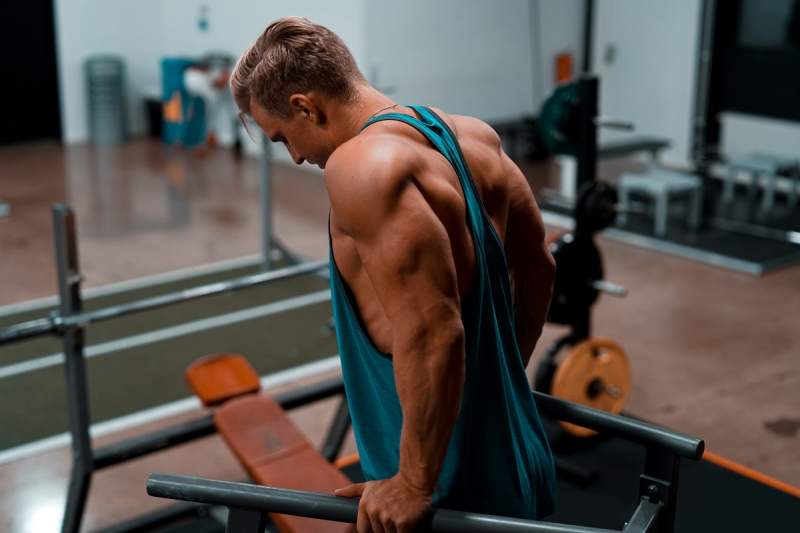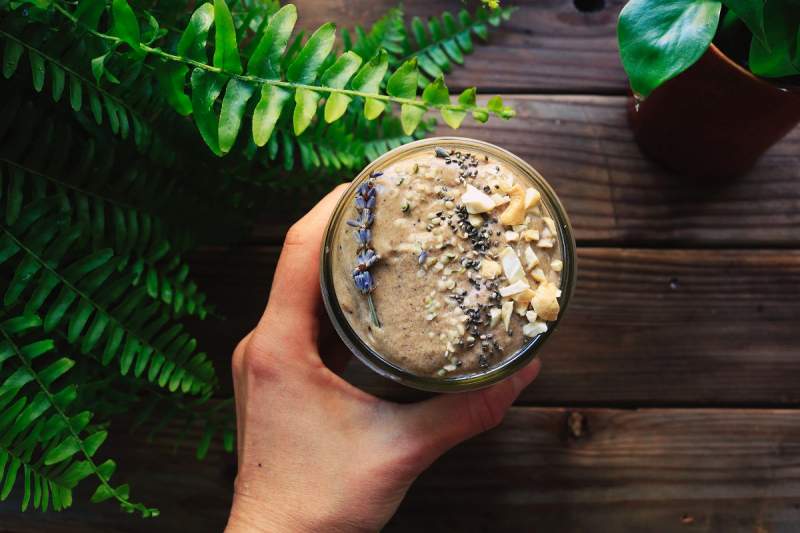Nowadays, more and more people are getting obsessed with HIIT (high-intensity interval training) and for a very good reason. First of all, HIIT doesn’t require any equipment, which is why it’s something you can do at home as well as at a gym. It helps people lose fat and not mass, in general, which means that, for the most part, their muscle remains intact. It’s not nearly as boring as traditional cardio, which means that, in the long-run, it tends to give more consistent results and, it’s highly customizable, which means that you never have to repeat the same session twice. Lastly, it teaches your body how to effectively use its stored energy and, in this way, gives a direct boost to your metabolism.
The problem with HIIT lies with the fact that, as its name suggests, it’s incredibly intensive, which is why your regular eating regimen may not be enough. Don’t get us wrong, we’re not suggesting that you can’t do HIIT with your current diet, that would be an outright preposterous claim. We’re merely indicating that in order to get the most of your HIIT regimen, you need to make some slight adjustment to your nutrition. This means changing your caloric input, revising your macro, scheduling your meals better and developing some beneficial nutritious habits. Here are several ideas and suggestions.
Carbs, fats and proteins
 The first thing you need to know about a proper nutrition lies in the fact that it heavily revolves about a timely consumption of carbs, fats and proteins. While, to some, the idea of simplifying down to this degree may seem outright insulting, the easiest way to put this is to say that carbs and fats provide you with energy, while proteins build muscle. In theory, most people would advise you to cut down on carbs and fats when planning to lose weight, yet, this idea doesn’t necessarily benefit you with HIIT. Exercises you’ll perform on a daily basis are incredibly exhausting, so lacking the energy (provided by carbs) might cause you to underperform.
The first thing you need to know about a proper nutrition lies in the fact that it heavily revolves about a timely consumption of carbs, fats and proteins. While, to some, the idea of simplifying down to this degree may seem outright insulting, the easiest way to put this is to say that carbs and fats provide you with energy, while proteins build muscle. In theory, most people would advise you to cut down on carbs and fats when planning to lose weight, yet, this idea doesn’t necessarily benefit you with HIIT. Exercises you’ll perform on a daily basis are incredibly exhausting, so lacking the energy (provided by carbs) might cause you to underperform.
Instead, you should just reexamine the origin of these nutrients and get them from the healthiest source you can find. For instance, oatmeal, healthy cereals and rice and whole grain bread are a great source of carbs and you might even want to add some healthy fats into the mix. Peanut butter or an avocado spread on a whole-bread toast is an amazing pre-workout meal. Add to this a bit of Greek yogurt (extra source of healthy fats) and what you get is a winning combination.
After the workout, your metabolism will start burning calories and it’s your job to point it in the right direction. By supplying it with protein one hour after the workout, you’re ensuring that it’s attacking fat cells instead of reducing your muscle mass. As for the source of protein, fish, lean meat and egg whites are the simplest, most delicious and cheapest solution. Turning towards supplements is also advisable, which is the next item on our list…
Supplements
 The next thing you need to keep an eye out for are the supplements, which can be your closest ally when used smart and in moderation. A post-workout protein shake can be of an immense help, yet, there’s no reason why you should stop there. After the workout, your glycogen levels will be brought dangerously low, which will only slow down the rate at which your metabolism works. Going for a supplement like Dextrose will replenish it, as well as satisfy your need for sweets. Keep in mind that psychological addiction to sugar tends to be your worst adversary in a struggle to get fit and in this way you get to triumph over it.
The next thing you need to keep an eye out for are the supplements, which can be your closest ally when used smart and in moderation. A post-workout protein shake can be of an immense help, yet, there’s no reason why you should stop there. After the workout, your glycogen levels will be brought dangerously low, which will only slow down the rate at which your metabolism works. Going for a supplement like Dextrose will replenish it, as well as satisfy your need for sweets. Keep in mind that psychological addiction to sugar tends to be your worst adversary in a struggle to get fit and in this way you get to triumph over it.
The next two supplements worth considering are caffeine and vitamins. First of all, it’s important to mention that caffeine is getting a lot of bad undeserved rep. In small doses, it boosts your alertness, helps you outperform during a training and it indirectly also helps burn fat. The problem is that it doesn’t have the same effect on those who already have an increased resistance to it by consuming multiple coffees per day. Even those who don’t want to take caffeine pills could benefit from one coffee just before the training (provided it’s the only cup they’ve had that day).
As for the vitamins, it all depends on how hard you push yourself. Training six days per week (even if not all of these sessions are HIIT) will push your body to its limits and compromise your immune system. By consuming these vitamin supplements, you’re merely giving it a slight boost, thus making your body somewhat more resilient.
Scheduling
 At the end of the day, when you eat matters as much as what you eat. We mentioned earlier that carbs are best consumed prior to the workout, however, not immediately before. Ideally, you would eat your pre-workout meal 3-4 hours before. Most HIIT involves a lot of jumping and cardio, which is why it’s likely that you would get nauseated if you’ve eaten less than an hour before the training. In order not to feel hungry during the training, you should have a snack (about 1 hour prior to the start of the training) in a form of a protein bar or a banana.
At the end of the day, when you eat matters as much as what you eat. We mentioned earlier that carbs are best consumed prior to the workout, however, not immediately before. Ideally, you would eat your pre-workout meal 3-4 hours before. Most HIIT involves a lot of jumping and cardio, which is why it’s likely that you would get nauseated if you’ve eaten less than an hour before the training. In order not to feel hungry during the training, you should have a snack (about 1 hour prior to the start of the training) in a form of a protein bar or a banana.
The shake we mentioned before should be consumed immediately after the training, ideally, you would have it in your gym bag or locker. One hour later, you should have that protein meal, in order to enhance your body’s recovery process.
In conclusion
Needless to say, the above-listed is just the tip of the iceberg. For instance, we only got to discuss proteins, carbs and fats (the macronutrients), without even mentioning micronutrients like calcium, magnesium, potassium, iron and zinc. Still, with a diverse diet, you should consume all of them either way. Nonetheless, consulting a physician or a nutritionist before you embark on this adventure is more than advisable. Apart from this, you also need to hydrate and sleep properly. Only when you manage to combine all of these elements will you be able to get optimal results.
